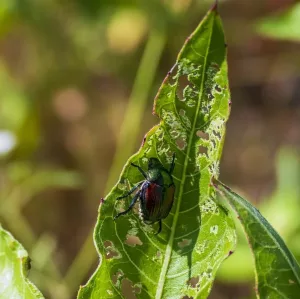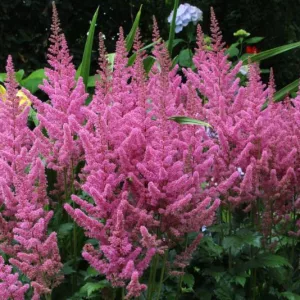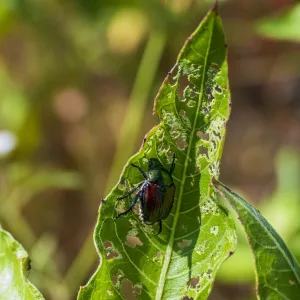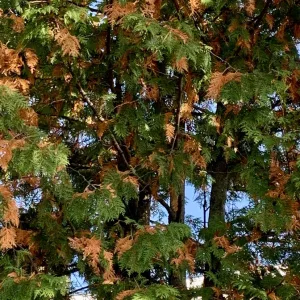Summary
Gardening expert and columnist, Susan Richards, answers gardening questions about Japanese Beetles and moving plants indoors in the fall.
As the calendar has turned to September, most of the summer is now behind us. Vegetable and herb gardeners are in full harvest mode. Flower gardeners are enjoying the last few weeks before the first fall frost arrives. This is a good time to cover some more answers to questions that I have received.
Andrew asked about the life cycle of those very destructive Japanese beetles that mowed through the roses in his garden. This is a very timely question. Japanese beetles are the most destructive in our area in late July and early August. They can very quickly turn foliage to lace as they voraciously feed. The female beetle will then seek out areas of soft earth in lawns and gardens to dig holes to lay eggs. Each female will lay 40 to 60 eggs in small batches over a two-week period.
Eggs will hatch in late August to early September. Their larval form is the white grub that feeds on roots of your lawn and some garden plants. If you begin to see expanding patches of dead grass that you can lift easily away with no roots, look for the grubs. At this time of year, they will be quite small but plump, greyish white with reddish brown heads. They typically curl into a C shape when disturbed.
Fall is the best time to control this destructive pest. The young grubs are feeding constantly. By applying beneficial nematodes or biological larvae control, they will ingest it as they eat, stop feeding and die within a week. Just be sure to apply the control method you choose following package directions. Nematodes are microscopic organisms that will die quickly if applied when sun is hot or if the lawn is allowed to dry out after application. The goal is to get them suspended in water, applied on a cloudy day and to keep the lawn watered for 3 additional days. The nematodes are carried with the water to the lawn roots where the grubs are feeding. A follow up spring grub control application is also recommended to catch any larvae that are missed in fall.
Lynn asked about the best method to bring in tender plants for the winter. She has a tropical Dipladenia plant that has been beautifully blooming all summer and wondered if it could be overwintered indoors in a sunny window. Yes, I know from personal experience, it certainly can! They will most likely drop quite a few leaves when first brought inside, but this is normal. Plants often do as they adjust to the lower light levels in your home.
Once you decide which plants you want to bring in, insect them carefully for bugs. Dipladenia and its cousin the Mandevilla vine are particularly prone aphids. Even if none are seen on the plant, it is best to do some preventative spraying with insecticidal soap before any plant comes indoors. Wash the entire plant with a gentle stream of water, being sure to get under all leaves. Once foliage dries, spray with the soap solution, and if possible, wipe down both sides of every leaf with a damp cloth.
If growing in a pot, inspect the soil carefully too. You don’t want to introduce and slugs, snails, ants, etc.… into your home. You can soak the entire pot in a solution of insecticidal soap for 30 minutes, then set it aside to drain.
If the plants you want to bring in are growing in the garden or in a pot too large to bring indoors, they will need to be repotted with fresh indoor potting soil. Garden soil is too heavy to use for indoor plants.
In preparation for moving any plant indoors, it is a good idea to condition them for the move. Over a 7 to 10-day period, start moving them inside at night. This is especially important if temperatures are dipping to around 12C. By that temperature plants will start to get leaves that turn yellow and drop. Keep these plants isolated from your indoor plant collection for several weeks, inspecting them often. You want to ensure the plants are pest free before mixing them in amongst your houseplants.




